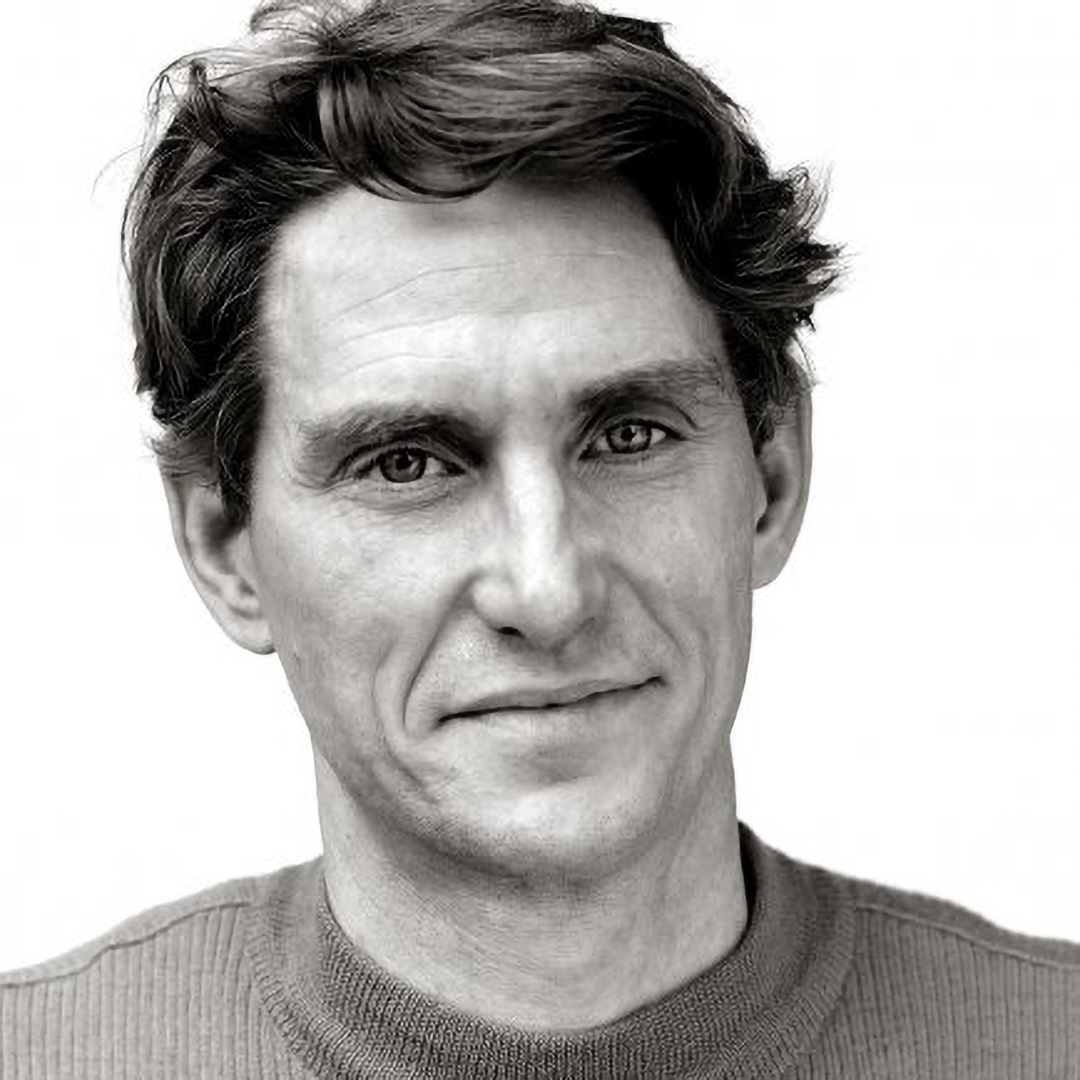How can we make textiles more local and circular in Hamburg was the initial question for Circular Design Deep Dive 2 on March 3 at Fab City Haus.
Since industrialization about 150 years ago, a highly efficient division of labor, administration and production has developed along a linear economy. The result is extremely inexpensive products that, at least in the industrialized countries, can largely be afforded by everyone. The other side of the coin is devastating mountains of waste, a pending climate catastrophe and still sometimes catastrophic working conditions in supplier companies from the global South. This applies to the majority of economic sectors and is particularly glaring in the textile and fashion industry. For just a few euros, we buy clothing that has traveled tens of thousands of kilometers on its delivery route and usually ends up as toxic waste in Africa or Asia after a short period of use. Not infrequently, it has been produced and disposed of under inhumane working conditions.
There is widespread agreement that this cannot continue. Initial strategies for overcoming this have been developed, particularly in the European economic area. With several billion euros, the European Union wants to transform the linear economy into a circular economy in the course of the so-called Circular Economy Action Plan (part of the Green Deals). The Fab City movement has set itself the goal of producing almost everything that is consumed in the city by 2054. The goal is to be achieved through cross-sector initiatives that act locally and think globally. It develops open, prototype innovations that are environmentally, socially and economically sustainable. Clear values of the Fab City movement are open source, inclusion and sustainability. With many small steps and initiatives, we are approaching this noble goal: A paradigm shift is needed in all areas - from consumer behavior, education, innovation and production to data collection. One of these small steps was the Circular Design Deep Dive (CDDD II) organized in Hamburg by Fab City Hamburg e.V. on March 3, 2023. As part of the INTERFACER project funded by the European Union, a workshop was organized together with the Hamburg environmental authority (BUKEA), where the Circular Economy is a central theme. The aim was to create a space to develop ideas together with the most innovative local and also national actors of the whole value chain on how the textile industry could be made more circular and sustainable through a better data exchange in Hamburg.
Circular Fashion by data
But how can an economy made up of highly complex supply chains spread across the globe, involving hundreds of suppliers, one often unaware of what the other is doing, be made circular and sustainable? Data plays a central role in this.
- What materials were used? Where did they come from?
- Under what conditions were they produced?
- What is their carbon footprint?
- How can they be repaired or recycled?
- How can the data be integrated into the textiles in such a way that they are still present and legible after passing through as many usage stations as possible?
Such information is important so that everyone can make a conscious decision, including in consumption, and market mechanisms can be developed to extend material cycles and avoid waste. To this end, it is necessary to establish uniform data sets and develop technologies that record and map them. As part of the Ecodesign for Sustainable Product Regulation (ESPR), the Digital Product Passport (DPP) is to be developed. Its declared aim is to extend material cycles by exchanging data along the entire supply chain and to avoid waste or provide the necessary information to return materials to material cycles at the end of their life cycle.
Innovation through synergy and cooperation
But what exactly does that mean? What data must be collected? Who needs to provide what data? Who needs which data? How can the data provided by one actor be passed on to all other actors? How can companies in which data largely plays no role in their work processes, e.g., alteration and repair tailors, but which are significant for a functioning circular economy, be integrated? What opportunities do the Digital Product Passport and Circular Economy and Design offer companies? All these questions were starting points for the Circular Design Deep Dive. In selecting the companies and initiatives, the aim was to involve predominantly local, innovative small and medium-sized enterprises that map the entire production and supply chain, as well as research institutions, municipal authorities and experts from the federal territory. We understand innovative here as a clear focus on sustainability, circularity and locality, i.e. not in the sense of the “next killer app” mentality of Silicon Valley.
The aim of the event was first of all to raise the awareness of the participating actors for the relevance of data for the circular economy as well as for the European initiative of the DPP, in order to work out room for maneuver on how a higher circularity can be achieved in the Hamburg textile industry through the collection, provision, exchange and dissemination of data. The starting thesis was that for the circular economy a systemic networking of all actors involved is of immanent importance and thus politics, science, companies and civil society should act together. Thus, the event was designed as a co-creative process in which the participants could play an active role and contribute their specific expertise in order to establish a common understanding of the complexity and to develop ideas on how Hamburg can become a pioneer of a local circular textile economy.
After a short introduction to the topic by Wolf Kühr from Fab City Hamburg and Claudia Eggert-Köster from the Environmental Agency, this was deepened by short input talks to set the mood for the various aspects. Andreas Schneider from the Global Textile Scheme presented the development of a systemic semantics of the textile industry and the European project Cirpass. Afterwards, Henning Wilts from HafenCity University and the Wuppertal Institute talked about different regulations and laws on federal and European level of sustainability and circularity. Finally, Sarah Prien presented her StartUp House of All and the Hamburg Textile Hall 4 Circularity.

The circle has no beginning and no end
The co-creative part of the workshop was facilitated by Michael Ziehl. After a short warm-up, the participants divided into small groups, organized according to the stations of the supply chain. These were structured into pre-, during- and after-use categories and chosen in such a way that they represented the complexity of the cycle on the one hand, without getting lost in too much specialization on the other. Thus, raw materials were understood to include the cultivation, production and preparation of fibers of all kinds up to spinning or other surface processing. Surface production included the spinning of fiber into yarn of any kind, as well as weaving, fulling, knitting and other processing from material to surface. Other stations included design, manufacturing, distribution, use, repair service, 2nd hand, and recycling. At all stations, questions were posed for participants to answer for their specific context:
- What information do I need to keep a textile in circulation?
- What challenges do I face to keep a textile in the loop?
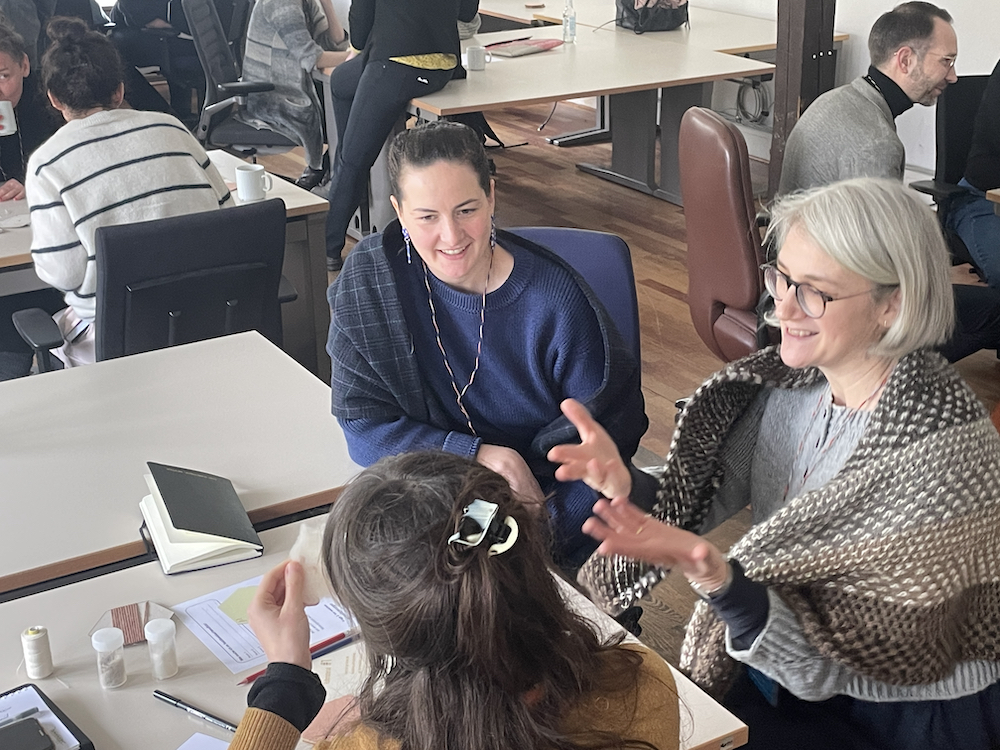
Lively discussions followed and it seemed that the exchange on the topic had met with a latent need among the participants. Among other things, the very interesting blog article by Kathrin Toepffer from Fibershedbears witness to this. The networking and getting to know each other among the companies and initiatives is a first success of the workshop. After 45 minutes, each group had well-developed answers that they presented to the plenary. The first answer to the information question was represented as a line from the station that needs the data to the station that could provide the information. Thus, a mapping of potential data flows between each station in the supply chain gradually formed. Two results in particular stood out:
- The high complexity of a Digital Product Passport even with only one industry sector and with actors from primarily local small and medium-sized enterprises.
- The central role of designers. They play an intermediary role between the selection of textiles and accessories, the processing and the well thought-out design of the end-of-life. In a sense, they have to design the product from the end, combined with the information of its raw materials.
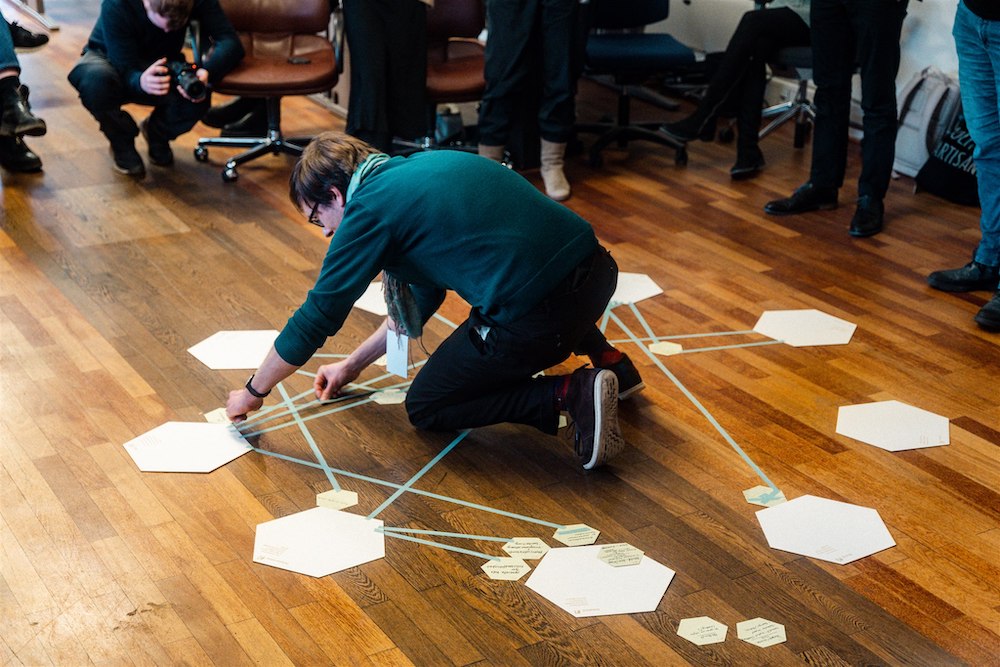
A large part of the need for data relates to more precise information according to the material properties, starting with the composition of the fiber, its vegetable or animal origin, its additives or dyes, and the possibility of its traceability in biological or technical cycles, but also information on care and maintenance. Processing and qualification according to recyclability and sustainability are also relevant. The social, ecological and economic impact of translating the data into easily understandable information was highlighted at several stations. How can the information be integrated inseparably on the product, i.e. how can the soft (data) and hardware (carrier of the information) gap be closed and data be read automatically, for example to simplify manual sorting at the recycler or also in the second-hand sector? This also raises the question of how data on usage - i.e., among other things, how often an item of clothing has been washed - can be collected and how this can be used to automatically determine its value at the second-hand retailer. And to what extent can such data be objectified?
The second question targets perspectives for action that help create the economic, cultural, and regulatory conditions for locality and circularity. The following ideas were proposed:
- Better referencing of local production and materials.
- Better networking of actors
- Campaigns that support the shift from a fast fashion mindset to an appreciation of quality, second hand, repair and longevity.
- Support for local designers, e.g. through rent subsidies in the city center.
- Tax breaks for recycled products
Data for action - what’s next?
The topic of the circular local textile industry was further explored in a panel discussion the following day at the the the futur of making-Konferenz. The systemic work of the workshop was summarized there and extended by the singular perspectives - Nadine Herbrich, Andreas Schneider and Sarah Prien and thanks to the moderation of Michael Ziehl.
At the opening of the conference day, Jens Kerstan, Senator for the Environment of Hamburg, gave an enthusiastic speech in which he emphasized the importance of the Circular Economy for Hamburg. In this transition, Kerstan said, the creative industries and the Digital Product Passport also play a significant role. The welcoming words were extended by an initial summary in three theses of the workshop results by Wolf Kühr, which were closely linked to Kerstan’s perspectives:
-
Data for action, not for knowledge. The thesis was adopted by William Neale, Advisor for Circular Economy of the Directorate General of Environment at the European Commission, as it describes very well the intention and orientation of the workshop. Data collection is not genuinely about a better understanding of material flows, but has the goal of extending the lifetime of products and returning them better to material cycles.
-
Locality is important, also for data. The general image of a globalized supply chain in the textile industry, which is determined by a few giants and that therefore changes can only happen at the highest level, was partially refuted in the workshop. It was initially surprising to see how many local actors were present at the workshop, together representing an almost complete local supply chain. In addition, a number of regulations and concrete organizations are decided at the local level. Let’s just think of waste management or business location, which is largely subject to municipal authorities. Promoting cooperation for a better use of local resources is easier to achieve on a regional level than across borders and long distances.
-
*Circularity needs new forms of collaboration. The transition from a linear to a circular economy also requires organizational restructuring. Today’s forms of economic organization, both within companies and at the macroeconomic level, are an expression or the concrete implementation of the linear economy and are characterized by silo thinking. They are geared to thinking in terms of supplier-customer cooperation and to extracting raw materials as cheaply as possible, transforming them and treating the resulting waste as externalities in the best possible way, i.e. leaving the resulting costs and damage to the public purse. To change this, we now need much more detailed information about material flows along the entire cycle chain. Thus, product development should be thought from the end. Another perspective is Urban Mining, in which raw materials are obtained directly from the city through reuse and recycling. This results, for example, in collaborations between designers and recyclers. However, this also requires a ‘new’ understanding of design, as Victor Papanek, for example, very radically demanded 50 years ago in “Design for the real World”. Here, however, the educational institutions are also challenged to adapt their curricula to these new requirements.
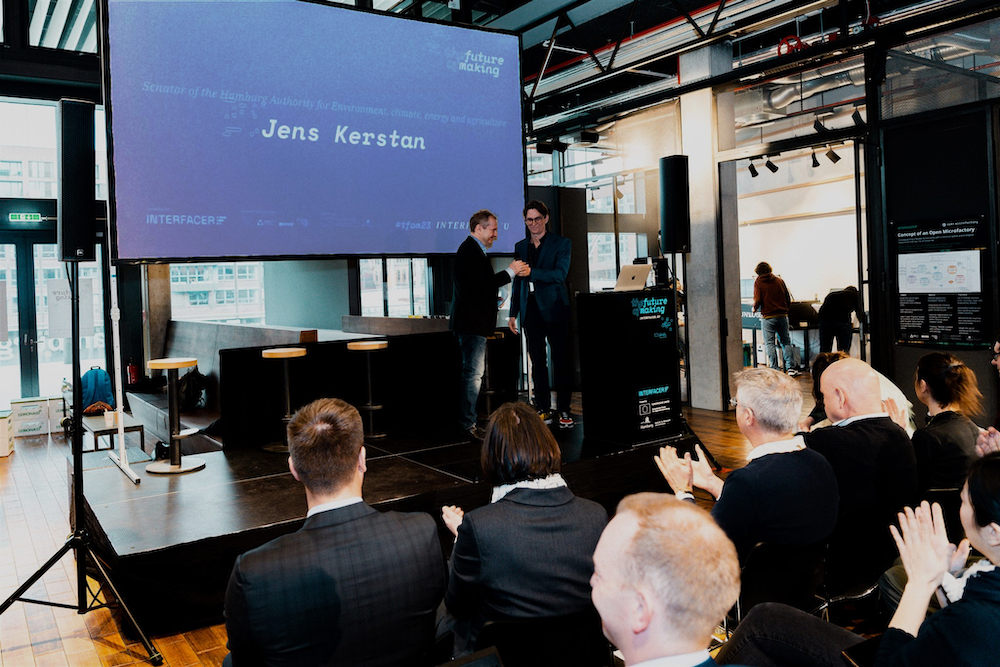
Until less than a century ago, the textile industry was largely circular, as the raw materials processed were all biodegradable. This changed with the massive use of plastics after World War II. But the way out of the current crisis will not be a return, but a combination of better use of technologies (DPP, more research on new ones such as biodegradable polymer materials, better recycling technologies) and a return to traditional local materials, such as linen, hemp and wool, as well as a change in thinking and action in consumption and use patterns. All of these perspectives mentioned need the participation of business, government, academia, and civil society for their implementation. The workshop and the statements of the participants have clearly shown that there is already a strong potential of committed supporting actors who have articulated the interest to cooperatively establish and expand a local textile circular economy in Hamburg. Surveys of urban metabolism and clear targets would better structure joint action by business, government and civil society, which could be formalized in a local circular textile strategy. Different actors are working on such projects, such as the joint dtec.bw research project “Local production in the sense of a Fab City” of HSU and House of All UG.
Save the date
In summary, a number of interesting theses were developed in a few hours, stakeholders interested in further work came together and BUKEA considers it a highly relevant topic - therefore, it will organize a follow-up event on October 9 at 5pm at Hanseatic Help.
Finally, a special thanks to the participants, thanks to whom this event was a small step towards a circular, local data-based Circular Economy in Hamburg.
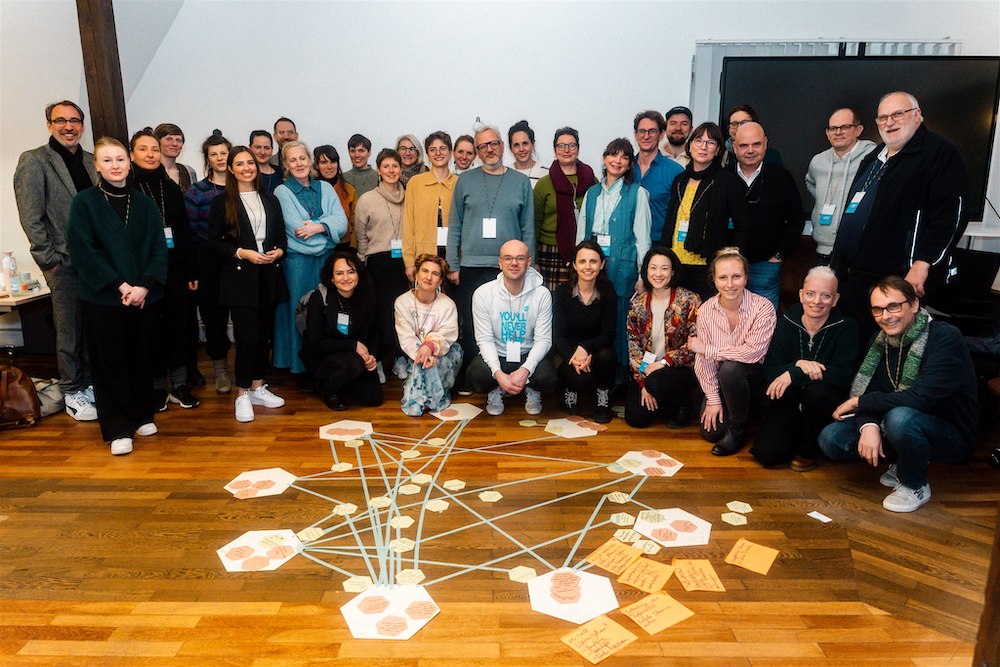
Contact person
Project sponsor

